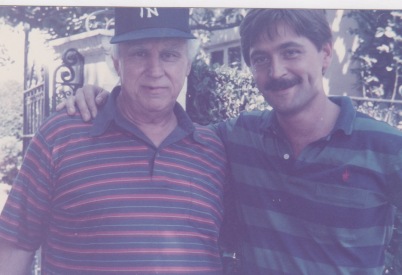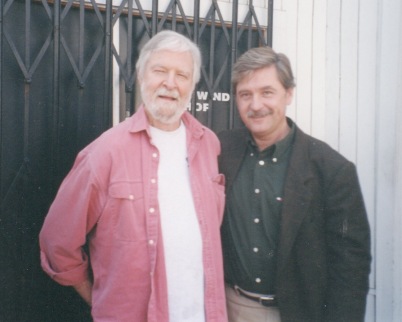Growing up in Barcelona, Jordi Pujol listened to his father’s record collection, which was like a “who’s who” of popular American jazz.
“When I was young, my father mostly listened to swing orchestras – Tommy Dorsey, Artie Shaw, Les Brown, Glenn Miller,” Pujol recalls. “He also had some records by Duke Ellington, Count Basie, Lois Armstrong and some mainstream jazz groups like Johnny Hodges and Ben Webster. He also had the four volumes of ‘The History of Jazz,’ a collection that Capitol Records released in the late 1950s or early 1960s – every volume was a different period of jazz. Volume Four was dedicated to modern jazz, including Dizzy Gillespie, Coleman Hawkins, Miles Davis, Stan Kenton, and other artists. In this last volume, there was a tune called, I Had the Craziest Dream, played by a group called the Dave Pell Octet.

“At that time, I was about 16 or 17 years old, and liked the group’s sound. The arrangement was by André Previn and the baritone solo was by Bob Gordon. I knew all the musicians playing in the other selections on that record, more or less. But I didn’t know anyone in that particular group. I wanted to know more about what they were doing, so there started my interested in West Coast jazz.”
In 1983, Pujol founded Fresh Sound Records, which has among its 900 titles a large number of releases by American artists who were credited with creating the West Coast sound. Many of these artists, including Shorty Rogers, Chico Hamilton, Conte Candoli, and Shelly Manne, made great contributions to the jazz-influenced film and TV scores during the mid to late 1950s and early 1960s. Pujol’s meticulously and lovingly researched liner notes, as well as vintage photographs of musicians, composers, and arrangers that are Fresh Sounds packaging for these releases are value added for the serious collector – or in the case of this author, for those who were perhaps born too late and are enthralled by the artistry and rich history of this music.
“There are so many [film scores] that are good, but these show the evolution of jazz in the movies,” says Pujol, who is currently working on a book about jazz in film. “Leith Stevens was the first to use jazz scores in movies like ‘Private Hell 36,’ and ‘The Wild One.’ In both movies, Shorty Rogers was responsible of the success of these soundtracks. Rogers and his Giants also appeared in ‘The Man with the Golden Arm,’ the score of which was composed by Elmer Bernstein, a film where the main character was actually a jazz musician, portrayed by Frank Sinatra. Henry Mancini’s contribution to this field was also important with his score for the film ‘Touch of Evil,’ and especially for the music of the popular ‘Peter Gunn’ TV series. ‘The Subterraneans’ by André Previn was very interesting too, and of course, ‘I Want to Live’ by Johnny Mandel.”

Pujol notes the longtime association between jazz and thrillers and action films.
“There was a big change because [previously], movies used symphonic orchestras, and jazz was a new way to present those kinds of movies, most of them were related with crime,” he says. “Shorty Rogers and all the above composers were essential in this development as the men responsible for the success of jazz on film and TV. Later, Pete Rugolo, Lalo Schifrin, Jerry Fielding – and Dave Grusin, Mike Post, Pete Carpenter on TV – mixed more modern flavors with jazz on the screen to suit different moods.”
Many of the Fresh Sound releases of West Coast jazz focus on the work of instrumentalists and singers with particular arrangers who helped them achieve a signature sound. These partnerships, which continue to ensure the longevity of these vocal jazz treasures include Marty Paich with Sammy Davis, Jr. or Mel Tormé, Nelson Riddle or Gordon Jenkins with Frank Sinatra, and Billy May with anyone.

“I’ve always been interested in the arrangers, who made jazz different on the West Coast in the 1950s” says Pujol. “I have a lot of my favorite musicians in East Coast jazz; I see that they are more straight ahead, hard bop players, which I like too, and such great and influential arrangers as Gil Evans, Al Cohn, Ralph Burns, and Gunther Schuller. But on the West Coast, arrangers like Marty Paich, Shorty Rogers, Bill Holman, Johnny Mandel, and several others who were also involved with the Hollywood studios contributed to create that identifiable West Coast fresh sound.”
Pujol says that film scores and television also kept jazz in the public mind during the 1950s and 1960s, with programs like “Stars of Jazz,” hosted by Bobby Troup and “Frankly Jazz” with Frank Evans.
“They made those programs back then because jazz was so well-received,” says Pujol. “Jazz introduced other music into film and TV. Almost all the series in the 1950s had jazz in the background, but little by little that changed in the 1970s, moving more and more towards pop sounds and rhythms. These were still instrumental, with big bands and filled with some good jazz soloists, too.”

Fresh Sound Records also boasts a variety of genres within jazz, including jazz funk, world jazz, bossa nova, Latin jazz, and jazz flamenco. Pujol notes that at one time, jazz was far more accepted by the general public as a popular musical genre than it is today.
“When I was young, many people went to jazz concerts,” he notes. “They were not necessarily jazz fans, but they liked the music and understood it. American musicians started to live in Europe, so jazz became more international after the Second World War. Also, events like the Newport Jazz Festival contributed a lot to jazz and what was happening in the 1950s. In that decade, a lot of festivals began to be organized in Europe too. They helped not just to develop jazz, but were a good space to show people that jazz was a very creative kind of music, with great artists.”
For more about Fresh Sound Records, click here.
All photos courtesy of Jordi Pujol
© MMXVII Joanie Harmon – From the forthcoming book, “Jazz on the Small Screen”